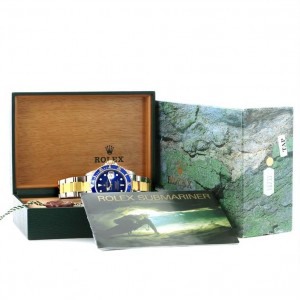When it comes to counterfeit watches, many of them try to mimic the appearance of luxury pieces like Rolex. However, there are key differences that set real Rolex watches apart from their fake counterparts. 
The Cost-Effectiveness of a Real Rolex vs. Fake Rolexes
It’s mind-boggling to think that someone might spend $1,500 on a fake Rolex when, for just a bit more – about $1,700 – you could own a vintage 1970s Rolex Datejust. The Datejust, with its timeless design, holds its value much better over time. In fact, after five years of use, a real Rolex could even appreciate in value. A replica Rolex, on the other hand, will likely be worth nothing once it’s worn out.
If you’re looking at a Rolex as an investment, the financial advantage is clear. Wear a genuine Rolex for five years, and you could easily sell it for more than what you paid. A fake Rolex, however, will lose its value completely, leaving you with a $1,500 hole in your pocket.
Real Gold and Quality Craftsmanship: What Sets Rolex Apart
Rolex is synonymous with quality. The company uses only solid gold – whether it’s yellow, white, or Everose gold – in their watches. Fake Rolexes, however, often feature gold plating, which is a thin layer that wears off over time. Rolex watches are built to last, and their weight and heft are signs of this quality craftsmanship. If a Rolex feels light, it’s likely a fake. 
Gold-Plated Rolexes?
It’s worth noting that while modern Rolexes are never gold-plated, older models – like the Rolex Oysterdate Precision reference 6694 – did use “gold-wrapped” or “gold-filled” techniques. These watches were often coated with a thin layer of 14K gold. However, this practice is outdated and rarely used today, as the plating would eventually wear off, leaving the underlying stainless steel exposed. Modern counterfeit Rolexes may try to mimic this, but they still fail to match the solid construction and long-term durability of genuine Rolex pieces.
Spotting Fake Rolexes: Engravings and Markings
One of the best ways to identify a fake Rolex is by looking at the engravings. Genuine Rolexes feature sharp, clean engravings that are difficult for counterfeiters to replicate. The Rolex hallmark – a unique maker’s mark required by Swiss law – should be crisp and clearly visible. On models produced after 1995, this mark includes a small “G” next to a St. Bernard’s head. Fake Rolexes often lack this detail, or the engraving may appear blurry or incomplete. 
Checking Clasp Length for Authenticity
The clasp length is another subtle yet important indicator of a genuine Rolex. Fake Rolexes tend to have clasps that are longer than those on authentic pieces. If you’re unsure about a potential Rolex purchase, measure the clasp carefully. It’s a small detail that can make a big difference in authenticity.
Trusting Professionals and Making Smart Investments
When considering a Rolex, whether vintage or modern, always buy from trusted professionals. Established retailers or well-known second-hand dealers ensure you’re getting a genuine piece. Rolex watches are more than just watches – they are investments that hold their value over time. Buying a fake Rolex, on the other hand, is not just a waste of money but also a risky choice that offers no return. 
If you’re contemplating a purchase, remember this: buying a genuine Rolex offers not only the prestige of owning one of the finest watches in the world, but it also gives you the opportunity to resell it down the line, often at a profit. Fakes, unfortunately, offer no such reward.


